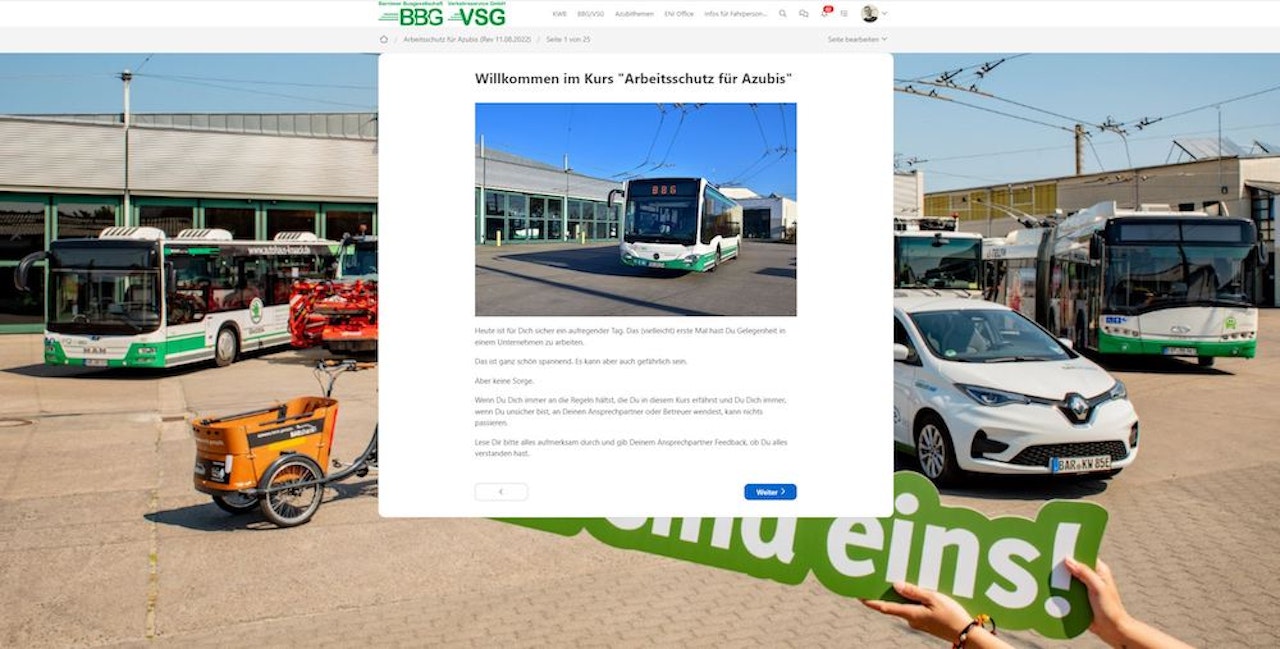How to integrate frontline workers in knowledge exchange
Blog | 5 ideas from the work field

How can non-desk workers become part of an organizational learning culture, when they are challenged by limited access and traditional patterns of knowledge transfer? 5 practical solutions from the work field.
What kind of employees do you think of when you hear the words seminar, WBT and webinar? For most, images of “white collar” employees come to mind here: salespeople, administrative staff, executives, etc. i.e. those who generally adhere to the business dress code (“white collar”) and do most of their work on a PC. But what about the “blue collar” employees, workers from industry, construction and similar manual fields of labor? And “pink collar” who often work in retail, tourism and likewise don’t have access to PC during working hours. They, too, have a need for knowledge growth, on the one hand to ensure safety and quality at work, and on the other hand to establish modern approaches, to be inspired and encouraged, and to be part of a holistic learning culture. However, engaging non-desk employees in learning programs is not always easy.
Challenges include:
An often tight shift schedule on the one hand, that usually makes it impossible to get all employees together for a seminar at the same time. On the other hand, access to hardware is sometimes a problem. Those employees who do not to work on PCs rarely have a suitable device available during working hours. Sometimes there are also no company e-mail addresses.
Due to limited access, many non-desk employees are not accustomed to completing learning programs. Traditionally for blue-collar workers, knowledge tends to be imparted while working or through notices.
Skepticism and acceptance can also be among the problems, as many measures seem tailored to white collar (by the way, this applies not only to continuing education, but also to other HR areas, such as employee surveys).
A simple solution is the use of learning software on mobile devices, which allows individual and flexible access to learning content (if necessary, even without an own e-mail address) and proves the completion of courses through data and certificates of the learners. But is that enough to get non-desktop workers accustomed to eLearning and other ways of accessing information digitally? In our experience, a few more measures are helpful for this.
Ideas from the work field
1. Use work breaks as learning time
A German bus company gives a good example of how to engage its bus drivers in learning programs. Bus drivers often have long breaks between work shifts. These breaks will usually not be paid, but it is also not worth going home during them. The Barnimer Busgesellschaft (BBG) has decided to recognize these breaks as paid time – if they are used for learning. Drivers can access the training via their mobile phone or tablet and complete a series of modules until the next trip begins. Learning time and success can be easily tracked and credited in the learning software. Both the drivers and the company now benefit from the enhanced knowledge of roads, routes or technical specifications.

Read the full Barnimer case here
2. Provide a mixture of mandatory and optional courses
Given the appropriate hardware (mobile or PC workstation) and learning time (ideally paid!), managers can “force” industrial workers to attend mandatory courses. This is often the case with risk education and product specifications, which are essential for work quality and safety. But getting a hands-on worker to voluntarily participate in additional training programs takes more (or so the assumption goes). OTTO DÖRNER, a recycling company from Germany, has found a nice way to invite its employees to additional training, with a comprehensive course package that relates to their daily work. In addition to the mandatory courses that employees have to attend anyway (and are reminded of when needed), optional courses are offered. With a hint like “Did you know about the new courses?”, a selection of three to four eLearning courses appears in the middle of the academy overview. They include titles such as “The Performance Review Meeting” or “Be direct – give feedback “, and one can enroll with one click. If the relevance for one’s own work is given, there is a high probability that the course will be taken.
Read the full OTTO DÖRNER case here
3. Make learning fun
eLearning doesn’t necessarily have a reputation for being fun. But this is due to experiences from the past, when eLearning was synonymous with almost static clicking through. Today, most eLearning tools offer an appealing interface and a minimum of interactivity. With videos and animations, a big step has already been made. Add a few quizzes and feedback on the learner’s progress, and you’ll see how much you can accommodate your employees (even without expensive agency work).
OTTO DÖRNER provides a nice example of how you can easily attract employees to the learning platform with the means mentioned above: a simple quiz with a chance to win a 50 € Amazon voucher. Here, fun questions were asked such as, “Who has the longest commute to work?” “Which man has the smallest shoe size?” or “How big is our site?” A great success!
4. Give employees an active role
Truly engaged participants on the platform are those who contribute knowledge and material themselves. Here, Barnimer Busgesellschaft once again provides a great example: It lets trainees create video footage (with a GoPro camera) about the lines and vehicles, which is then turned into eLearning courses. Ingenious, right? The trainees who created the footage remember it much better right away. And the other learners benefit from the beautiful videos, which are much more interesting than text instructions.

5. Stay patient and think ahead
At BBG and OTTO DÖRNER, drivers and other industrial employees didn’t jump into the eLearning boat overnight either. But over time, employees have come to appreciate the offer of continuing education during breaks or specially allocated learning time. According to BBG, such offerings also help to distinguish the company as an attractive, future-proof employer.
Many good ideas arise spontaneously among employees. Is there someone they can share these ideas with and who is willing to give it a try? Then there’s really nothing standing in the way of a learning culture that grows together.
Conclusion
Learning & Development measures that are already successful in the white collar area have not yet arrived entirely in the blue collar or pink collar area in some cases. But through learning-friendly working conditions and the creative use of eLearning software, non-desk employees can also be integrated into corporate learning programs. It is important to take the working circumstances and habits of all target groups seriously and to remove obstacles together. Then a shared learning culture can emerge that benefits both employees and employers in the long term.
By the way: Do you have any other ideas on how to integrate, motivate and engage employees – whether blue, white or pink collar? Feel free to write to us!
Editorial note: This article is based on Wikipedia’s definition of “blue collar,” which includes a very broad group of construction workers, tradespeople, electricians, industrial workers, waste management workers, (truck) drivers and many other occupations. The main characteristic is the distinction from “white collar” employees, who tend to have an office job, or “pink collar” from the service sector, although the transitions can be fluid.
We love to share our knowledge with you
Related blogs



